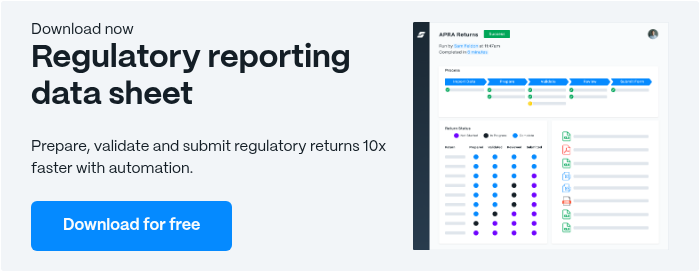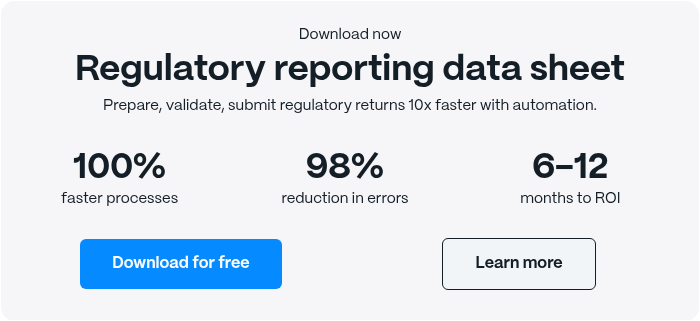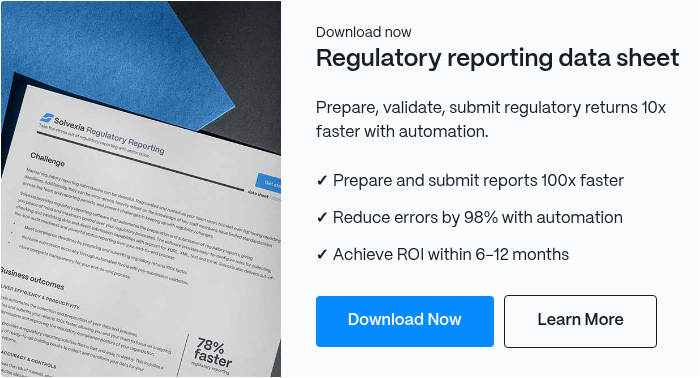Ultimate Guide to Key Risk Indicators (KRIs)

Key Risk Indicators (KRIs) serve as early warning systems that alert organizations to potential threats before they materialize into costly problems.
KRIs are measurable metrics used to identify and assess potential risks impacting an organization's ability to achieve its objectives. Unlike Key Performance Indicators (KPIs), which measure success, KRIs focus on adverse events' likelihood and potential impact. They provide a proactive approach to risk management, allowing businesses to anticipate challenges and take preventive action.
KRIs signal potential issues in your business operations, giving you time to address them before they escalate. This proactive stance is essential, where risks can quickly become significant obstacles if left unchecked.
Coming Up
Why Key Risk Indicators Matter
Key Risk Indicators are pivotal in shaping operational efficiency and strategic decision-making. By implementing a robust KRI framework, businesses can:
- Enhance Decision-Making: KRIs provide data-driven insights that inform strategic choices, helping leaders make more informed decisions about resource allocation, expansion plans, or cost-cutting measures.
- Improve Operational Efficiency: By identifying potential bottlenecks or weak points in processes, KRIs enable businesses to optimize their operations proactively.
- Strengthen Regulatory Compliance: Many industries face strict regulatory requirements. KRIs help organizations stay ahead of compliance issues by monitoring relevant metrics.
- Protect Reputation: By identifying and mitigating risks early, businesses can avoid costly mistakes that could damage their reputation in the market.
- Drive Continuous Improvement: Regular monitoring of KRIs fosters a culture of continuous improvement, encouraging teams to refine processes and strategies constantly.
Consider a financial institution that monitors the number of failed transactions as a KRI. A sudden increase in this metric could indicate system issues, potential fraud, or customer dissatisfaction. By catching this early, the institution can investigate the root cause and implement solutions before it impacts customer trust or regulatory compliance.
Similarly, a manufacturing company might use equipment downtime as a KRI. An upward trend in this metric could signal the need for preventive maintenance or equipment upgrades, allowing the company to address these issues before they lead to costly production delays.
By integrating KRIs into their risk management strategy, businesses can create a more resilient and adaptive organization better equipped to navigate uncertainties and capitalize on opportunities.
Effective Key Risk Indicators: Qualities and Examples
To harness the full potential of Key Risk Indicators, it's crucial to understand what makes them effective and how they can be applied across various industries. Let's explore the essential qualities of robust KRIs and examine some real-world examples.
Qualities of Effective KRIs
- Measurable: KRIs should be quantifiable, allowing for objective assessment and comparison over time.
- Predictive: They should provide early warnings of potential risks rather than measuring past events.
- Actionable: Effective KRIs are linked to specific actions that can be taken to mitigate risks.
- Relevant: They must align with the organization's strategic objectives and key risk areas.
- Timely: KRIs should provide information in time for the organization to take preventive or corrective action.
- Easy to Understand: They should be clear and comprehensible to all stakeholders involved in understanding.
Examples of KRIs Across Industries
Financial Services
- Credit Risk: Loan default rates, debt-to-income ratios
- Market Risk: Value at Risk (VaR), interest rate volatility
- Operational Risk: Number of failed trades, system downtime
Healthcare
- Patient Safety: Medication error rates, hospital-acquired infection rates
- Operational Efficiency: Average wait times, bed occupancy rates
- Regulatory Compliance: Number of compliance violations, audit findings
Manufacturing
- Supply Chain Risk: Supplier delivery times, raw material price fluctuations
- Quality Control: Defect rates, number of product recalls
- Operational Safety: Number of workplace accidents, near-miss incidents
Retail
- Inventory Management: Stock turnover ratio, shrinkage rates
- Customer Satisfaction: Customer complaint rates, Net Promoter Score
- Cybersecurity: Number of attempted security breaches, system vulnerabilities detected
Technology
- Project Management: Project delay rates, budget overrun percentages
- Product Performance: System uptime, bug report frequency
- Innovation: R&D spending as a percentage of revenue, new patent applications
By implementing these industry-specific KRIs, organizations can gain valuable insights into their risk landscape. For instance, a bank monitoring loan default rates can adjust its lending policies proactively if this KRI shows an upward trend. Similarly, a manufacturing company tracking supplier delivery times can diversify its supply chain if delays occur, ensuring production continuity.
Remember, the most effective KRIs are those tailored to your organization's specific needs and risk profile. Regular review and refinement of your KRI framework ensure it remains relevant and continues to provide actionable insights as your business evolves.
Developing and Implementing Key Risk Indicators
Developing and implementing an effective Key Risk Indicator (KRI) framework is a strategic process that requires careful planning and execution. Here's a step-by-step guide to help you establish a robust KRI system tailored to your organization's needs.
Implementation Example
Let's consider a software development company implementing a KRI for project delays:
- KRI Definition: Percentage of project milestones missed
- Thresholds:
- Warning level: 10% of milestones missed
- Critical level: 20% of milestones missed
- Data Collection: Automated tracking through project management software
- Responsibility: Assigned to Project Management Office (PMO)
- Reporting: Weekly dashboard updates and monthly trend reports
- Action Plan:
- At the warning level: Review resource allocation and identify bottlenecks
- At critical level: Escalate to senior management, implement recovery plan
By following these steps and continually refining your approach, you can develop a KRI framework that provides valuable insights and enhances your organization's risk management capabilities. Remember, the goal is to collect data and create a system that drives informed decision-making and proactive risk mitigation.
Technology's Role in KRI Monitoring and Management
Technology is pivotal in enhancing the effectiveness and efficiency of Key Risk Indicators (KRI) monitoring and management in the digital age. Automation tools and platforms have revolutionized organizations' collection, analysis, and action on risk-related data. Let's explore how technology shapes the landscape of KRI management and how businesses can leverage these advancements.
Real-Time Data Collection and Analysis
Modern KRI management systems can collect data from various sources in real time, providing up-to-the-minute insights into potential risks. This capability allows organizations to:
- Monitor KRIs continuously rather than relying on periodic reports
- Detect anomalies and threshold breaches instantly
- Respond to emerging risks promptly, minimizing potential impacts
For instance, a financial institution using real-time transaction monitoring can identify unusual patterns indicative of fraud much faster than traditional batch processes.
Advanced Analytics and Machine Learning
The integration of advanced analytics and machine learning algorithms into KRI management systems offers several benefits:
- Predictive Analytics: These systems can predict future risk scenarios by analyzing historical data and trends, allowing for proactive risk management.
- Pattern Recognition: Machine learning algorithms can identify subtle patterns and correlations in data that human analysts might miss.
- Anomaly Detection: AI-powered systems can automatically flag unusual activities or data points that deviate from expected norms.
- Risk Forecasting: Advanced models can forecast how changes in various factors might impact risk levels, aiding in scenario planning.
Automated Reporting and Dashboards
Technology enables the creation of dynamic, interactive dashboards and automated reporting systems. These tools:
- Provide visual representations of KRI data, making it easier to understand and interpret.
- Allow for customizable views based on user roles and preferences.
- Generate automated alerts when KRIs approach or exceed predefined thresholds.
- Facilitate the creation of comprehensive reports with minimal manual effort.
Integration with Enterprise Systems
Modern KRI management platforms can integrate with other enterprise systems, such as:
- Enterprise Resource Planning (ERP) systems
- Customer Relationship Management (CRM) tools
- Financial management software
- Operational databases
This integration ensures a holistic view of the organization's risk landscape and enables more informed decision-making.
Cloud-Based Solutions
Cloud-based KRI management solutions offer several advantages:
- Scalability to accommodate growing data volumes and user bases
- Accessibility from anywhere, facilitating remote monitoring and management
- Enhanced data security and disaster recovery capabilities
- Regular updates and improvements without the need for on-premises installations
Mobile Applications
Mobile apps for KRI monitoring allow stakeholders to:
- Access real-time KRI data on-the-go
- Receive instant notifications about critical risk events
- Take immediate action or escalate issues from their mobile devices
Blockchain for Enhanced Data Integrity
Some organizations are exploring the use of blockchain technology in KRI management to:
- Ensure the immutability and traceability of risk-related data
- Enhance trust in data shared across different departments or with external stakeholders
- Improve the auditability of risk management processes
Leveraging Technology: Solvexia
Solvexia stands out as a powerful option when considering software solutions for KRI management. Solvexia offers:
- Automated data collection and processing from multiple sources
- Advanced analytics capabilities for trend analysis and forecasting
- Customizable dashboards and reporting tools
- Integration with existing enterprise systems
- Cloud-based architecture for scalability and accessibility
By leveraging technology like Solvexia, organizations can significantly enhance their KRI monitoring and management capabilities, leading to more effective risk mitigation and better-informed decision-making.
As technology evolves, its role in KRI management will grow more significantly. Organizations that embrace these technological advancements will be better positioned to navigate the complex risk landscape of the modern business world.
Challenges in KRI Implementation and Solutions
While Key Risk Indicators (KRIs) are invaluable tools for risk management, implementing an effective KRI system can present several challenges. Understanding these obstacles and having strategies to overcome them is crucial for successful KRI implementation. Let's explore some common challenges and their solutions.
Challenge 1: Identifying Relevant KRIs
Many organizations struggle to identify KRIs that are truly predictive and relevant to their specific risk landscape.
Solution:
- Conduct thorough risk assessments to understand your organization's unique risk profile
- Involve stakeholders from various departments in the KRI selection process
- Start with a small set of KRIs and gradually expand based on their effectiveness
- Regularly review and refine your KRIs to ensure they remain relevant
Challenge 2: Data Quality and Availability
Poor data quality or lack of access to necessary data can significantly hamper KRI's effectiveness.
Solution:
- Invest in robust data management systems
- Implement data validation processes to ensure accuracy
- Identify and address data gaps early in the KRI implementation process
- Consider using data integration tools to consolidate information from multiple sources
Challenge 3: Setting Appropriate Thresholds
Determining the right thresholds for KRIs can be challenging, especially without historical data.
Solution:
- Use industry benchmarks as a starting point
- Employ statistical methods to set initial thresholds
- Implement a process for regular threshold review and adjustment
- Consider using dynamic thresholds that adapt based on changing conditions
Challenge 4: Organizational Buy-in
Lack of support from key stakeholders can hinder the successful implementation and use of KRIs.
Solution:
- Educate stakeholders on the value of KRIs in risk management
- Demonstrate the link between KRIs and business objectives
- Involve senior management in the KRI development process
- Regularly communicate KRI insights and success stories
Challenge 5: Integration with Existing Processes
Incorporating KRI monitoring into existing business processes can be challenging.
Solution:
- Map KRIs to existing business processes and risk management frameworks
- Integrate KRI reporting into regular management reporting cycles
- Use technology to automate KRI monitoring and reporting where possible
- Provide training to staff on how to incorporate KRI monitoring into their daily activities
Challenge 6: Overcoming Analysis Paralysis
An abundance of KRI data can sometimes lead to inaction or delayed decision-making.
Solution:
- Focus on a core set of KRIs that provide the most valuable insights
- Implement clear escalation procedures for when KRIs breach thresholds
- Use visualization tools to present KRI data in an easily digestible format
- Establish clear action plans linked to specific KRI thresholds
Challenge 7: Resource Constraints
Limited resources, both in terms of personnel and technology, can hinder effective KRI implementation.
Solution:
- Prioritize KRIs based on their potential impact and resource requirements
- Consider cloud-based solutions like Solvexia that offer scalability and cost-effectiveness
- Automate data collection and reporting processes where possible
- Train existing staff on KRI management to build internal capabilities
Challenge 8: Maintaining Long-term Relevance
As business environments change, KRIs can become outdated or less relevant.
Solution:
- Implement a regular review process for all KRIs
- Stay informed about industry trends and emerging risks
- Encourage feedback from users of KRI data
- Be prepared to retire or replace KRIs that no longer provide valuable insights
Organizations can significantly improve their chances of successful KRI implementation by anticipating these challenges and implementing the suggested solutions. Remember, developing an effective KRI system is an iterative process that requires ongoing attention and refinement. With persistence and the right approach, the benefits of a well-implemented KRI framework far outweigh the challenges involved.
Future Trends
As the business landscape continues to evolve, so does the field of risk management and using key risk indicators (KRIs). Staying ahead of these trends is crucial for organizations looking to maintain robust risk management practices. Let's explore some emerging trends and future developments in the realm of KRIs.
Advanced Predictive Analytics
The future of KRIs lies in their ability to monitor current risks and predict future ones with increasing accuracy.
- Machine Learning Integration: KRI systems will increasingly incorporate machine learning algorithms to identify complex patterns and predict potential risks before they manifest.
- Scenario Modeling: Advanced analytics will enable more sophisticated scenario modeling, allowing organizations to test the potential impact of various risk factors and strategies.
Real-Time Risk Assessment
The speed at which risks emerge and evolve in today's fast-paced business environment necessitates real-time risk assessment capabilities.
- Continuous Monitoring: KRI systems will evolve to provide continuous, real-time monitoring of risk factors, allowing for immediate detection and response to emerging threats.
- IoT Integration: The Internet of Things (IoT) will play a significant role in real-time data collection, with sensors and connected devices providing instant feedback on various risk indicators.
Artificial Intelligence in Risk Management
AI will revolutionize how organizations identify, assess, and respond to risks.
- Natural Language Processing: AI-powered systems can analyze unstructured data from various sources, including news articles, social media, and internal communications, to identify potential risks.
- Automated Decision-Making: In some cases, AI systems may be empowered to make automated decisions based on KRI data, speeding up response times to critical risks.
Integrated Risk Management Platforms
The future will move towards more integrated, holistic risk management solutions.
- Cross-Functional Integration: KRI systems will increasingly integrate with other business functions, providing a more comprehensive view of organizational risk.
- Ecosystem Risk Management: Organizations will expand their risk management scope to include suppliers, partners, and other stakeholders in their ecosystem.
Emphasis on Non-Financial Risks
While financial risks will always be crucial, there's a growing focus on non-financial risk factors.
- Reputation and Brand Risk: KRIs related to brand perception and reputational risks will become more sophisticated and integral to risk management strategies.
- Environmental, Social, and Governance (ESG) Risks: As ESG factors become increasingly important to stakeholders, related KRIs will play a more prominent role in risk assessment.
Customization and Flexibility
Future KRI systems will offer greater customization to meet the unique needs of different organizations and industries.
- Adaptive KRIs: Systems can automatically adjust KRIs based on changing business conditions and emerging risks.
- Industry-Specific Solutions: KRI platforms will offer more tailored solutions for specific industries, incorporating industry-specific risk factors and regulatory requirements.
Enhanced Visualization and Reporting
As data complexity increases, so will the need for clear, actionable insights.
- Augmented Reality (AR) in Risk Visualization: AR technology may create immersive, interactive risk data visualizations, enhancing understanding and decision-making.
- Narrative Generation: AI-powered systems can generate narrative reports that explain KRI trends and their potential implications in plain language.
By staying attuned to these emerging trends, organizations can position themselves at the forefront of risk management practices, ensuring they're well-equipped to navigate the complexities of tomorrow's business landscape.
Wrap Up
In an era of rapid change and increasing complexity, mastering Key Risk Indicators (KRIs) is a crucial element of business success. As explored throughout this guide, KRIs serve as vital tools for proactive risk management, enabling organizations to anticipate challenges, seize opportunities, and confidently navigate uncertainties.
Implementing effective KRIs may present challenges, from identifying relevant indicators to overcoming data quality issues. However, the benefits far outweigh these obstacles. By leveraging KRIs, businesses can enhance decision-making, improve operational efficiency, ensure regulatory compliance, and drive sustainable growth.
As we look to the future, the role of technology in KRI management will only grow more significant. From advanced predictive analytics to real-time risk assessment and AI-powered insights, the evolution of KRI systems promises to provide even more powerful tools for risk mitigation and strategic planning.
To truly master KRIs and harness their potential for business success, organizations should:
- Regularly review and refine their KRI framework to ensure ongoing relevance and effectiveness.
- Invest in technology and tools that enhance KRI monitoring and analysis capabilities.
- Foster a culture of risk awareness and proactive management across all levels of the organization.
- Stay informed about emerging trends and best practices in risk management.
- Continuously align KRIs with evolving business objectives and strategies.
Remember, effective risk management is not about avoiding all risks—it's about making informed decisions that balance potential rewards against calculated risks. By mastering KRIs, organizations can navigate this balance with greater precision and confidence, turning potential threats into opportunities for growth and innovation.
As you embark on or continue your journey with Key Risk Indicators, consider how tools like Solvexia can support your efforts. With its advanced analytics capabilities, customizable dashboards, and integration features, Solvexia offers a powerful solution for organizations looking to enhance their KRI management and overall risk mitigation strategies.
In conclusion, the mastery of Key Risk Indicators is an ongoing process that requires commitment, adaptability, and foresight. By embracing this challenge, organizations can build resilience, drive performance, and achieve sustainable success in an ever-changing business landscape.
FAQ
Intelligent reconciliation solution
Intelligent rebate management solution
Intelligent financial automation solution
Intelligent Financial Automation Solution
Intelligent financial automation solution
Intelligent financial automation solution
Intelligent financial automation solution
Intelligent financial automation solution
Intelligent regulatory reporting solution
Free up time and reduce errors
Recommended for you

Request a Demo
Book a 30-minute call to see how our intelligent software can give you more insights and control over your data and reporting.

Reconciliation Data Sheet
Download our data sheet to learn how to automate your reconciliations for increased accuracy, speed and control.

Regulatory Reporting Data Sheet
Download our data sheet to learn how you can prepare, validate and submit regulatory returns 10x faster with automation.

Financial Automation Data Sheet
Download our data sheet to learn how you can run your processes up to 100x faster and with 98% fewer errors.

Financial Automation Data Sheet
Download our data sheet to learn how you can run your processes up to 100x faster and with 98% fewer errors.

Financial Automation Data Sheet
Download our data sheet to learn how you can run your processes up to 100x faster and with 98% fewer errors.

Financial Automation Data Sheet
Download our data sheet to learn how you can run your processes up to 100x faster and with 98% fewer errors.

Financial Automation Data Sheet
Download our data sheet to learn how you can run your processes up to 100x faster and with 98% fewer errors.

Financial Automation Data Sheet
Download our data sheet to learn how you can run your processes up to 100x faster and with 98% fewer errors.

Rebate Management Data Sheet
Download our data sheet to learn how you can manage complex vendor and customer rebates and commission reporting at scale.

Top 10 Automation Challenges for CFOs
Learn how you can avoid and overcome the biggest challenges facing CFOs who want to automate.
.svg)







